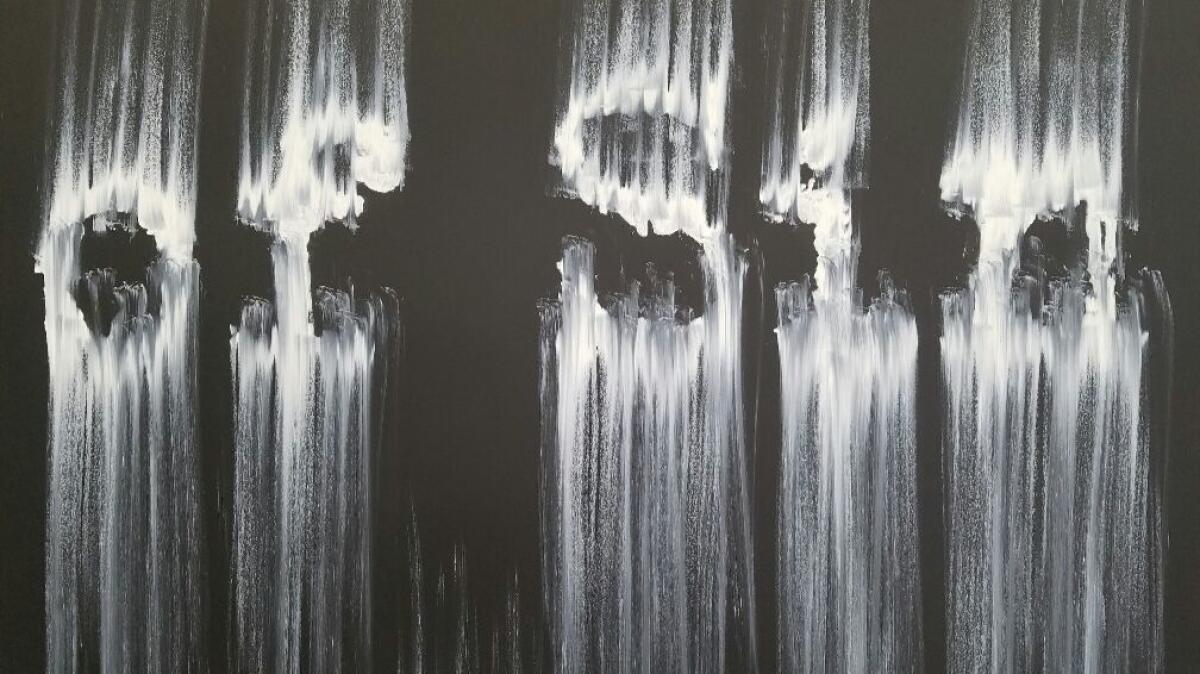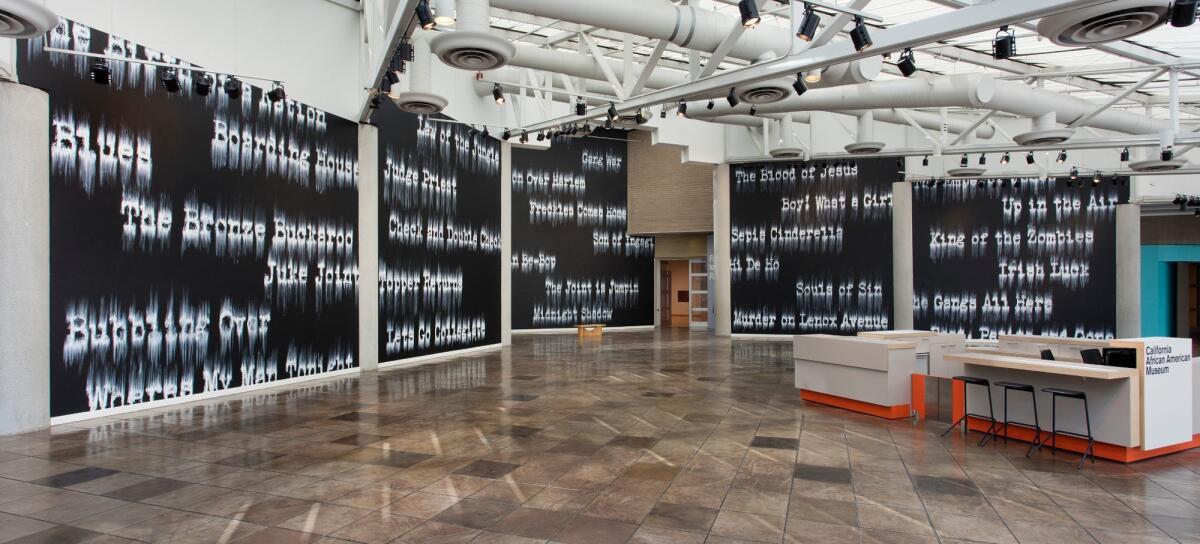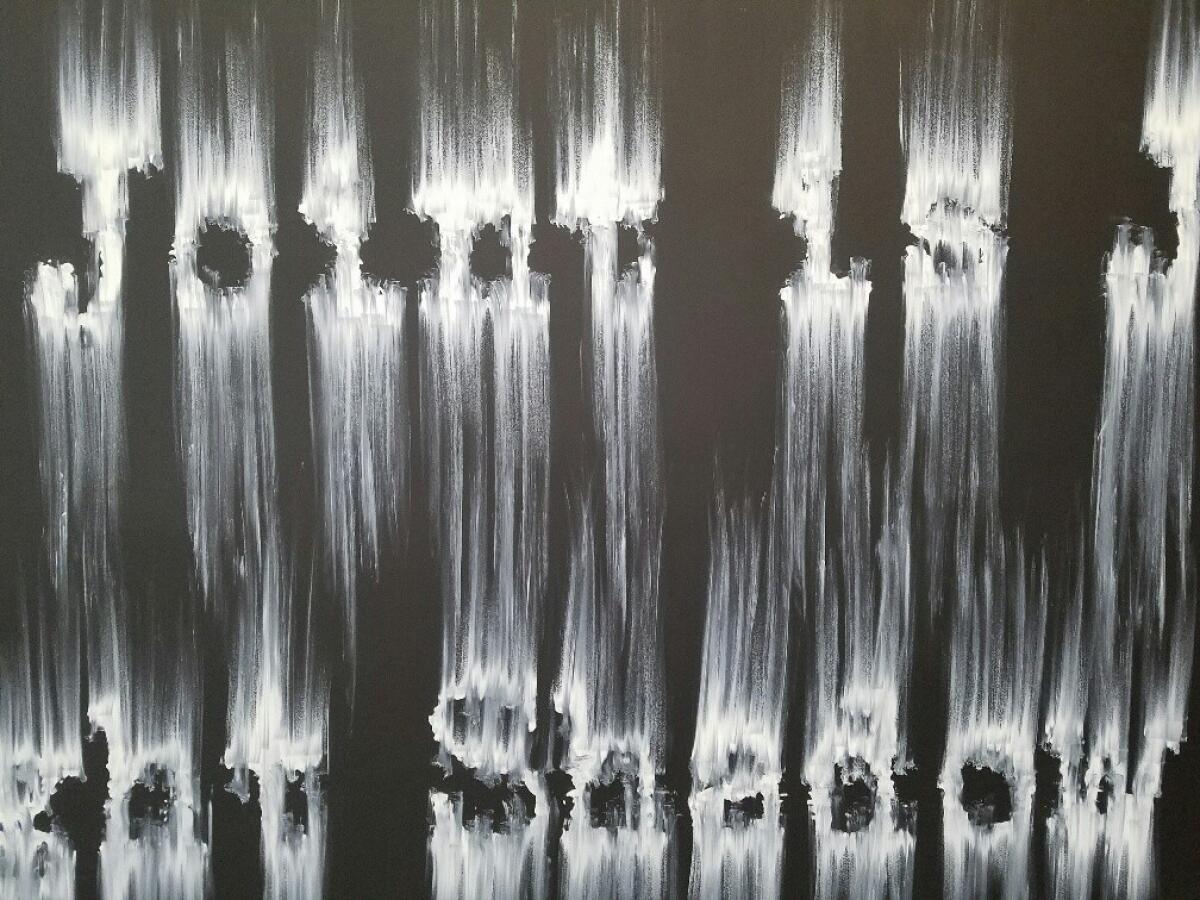Review: In Gary Simmons’ hands, classic film titles ooze with racial history

“Fade to Black” is a powerful suite of five monumental mural paintings by Gary Simmons in which history and memory toil mightily to keep from vanishing. In an enormous visual blur created by great smears of white paint on a black ground, dissolution has been stopped in its tracks.
At the California African American Museum in Exposition Park, those smudges list titles of 31 movies, most from the Golden Age of Hollywood yet most also half-forgotten. The primary exception is the first, reading from left to right: “The Birth of a Nation,” the famous 1915 silent epic by D.W. Griffith, notorious as a brilliant technical achievement applied to horribly racist subject matter.
It ends at the bottom of the right-hand wall with “Reet, Petite and Gone,” a 1947 musical starring popular swing bandleader Louis Jordan and jazz vocalist June Richmond. Segregated entertainments in which an all-black cast performed for black audiences in restricted theaters were a money-making feature of Jim Crow America — notably, in movies often produced by white companies. The extravagantly talented Jordan and Richmond gained traction with white audiences as well, although what it means to “crossover” to the other side of an officially mandated racial divide could fill a dissertation.


So-called “race movies” are today little known. Gone, the last word in this list, reverberates.
Simmons’ paintings and drawings have long employed an erasure technique to render subject matter from popular culture. Using his hands, fists, chalkboard erasers and other tools for the murals, he dragged the crisp, formal typeface of the painted lettering up and down.
But his mural’s paint is indefinite. The look, almost as if the frames of film in a projector were stuck and fluttering, is somewhere between imminent annihilation and furious clawing to endure.
The show was organized by CAAM Deputy Director Naima Keith. The museum’s vast lobby has never been the most congenial exhibition space, its sprawling emptiness further splintered by light angling down from a tangled ceiling of skylights, ventilation ducts and lighting tracks. Here, though, the unpromising architecture supports the paintings’ impact.
The animated visual hubbub contrasts with and heightens the frozen stillness of the words. Simmons has wedged his murals between bulky concrete piers, a design that further yields a sense of determined stability.
Reading the visual cues, I recommend taking a seat on one of the room’s many benches, pulling out a phone and searching movie titles plucked at random from the walls. You’ll discover a lot, and the murals’ consequence will grow.
California African American Museum, 600 State St., Exposition Park, L.A. Daily through July 31. (213) 744-2084, www.caamuseum.org
christopher.knight@latimes.com
Twitter: @KnightLAT
MORE ART NEWS AND REVIEWS:
Interview with ‘Fade to Black’ artist Gary Simmons
‘Spaghetti Dress for World Peace’ at Park View Gallery
Billy Al Bengston at Parrasch Heijnen
Jeffrey Gibson: American. Native American. Gay. An artist's life outside labels
Laura Aguilar: Turning a lens toward Latinas, lesbians and the large-bodied
The biggest entertainment stories
Get our big stories about Hollywood, film, television, music, arts, culture and more right in your inbox as soon as they publish.
You may occasionally receive promotional content from the Los Angeles Times.




